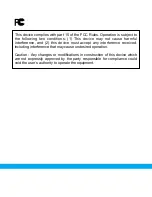
101
Programming example: fi xed-wing model
Example 3
Using the three-position switch SW 6/7
This variant implements a three-stage solution for
switching an electric motor on and off, and also results
in an “abrupt” motor start-up … unless the speed con-
troller you are using features what is known as a “soft
start” function.
At the receiving end you need a suitable speed control-
ler.
First check which receiver socket (5 or higher) is avail-
able to connect your speed controller. If you have
assigned two aileron servos in the »
base sett.
« menu,
and if you have not connected any other auxiliary func-
tion, then this would be channel 6; if your model features
two aileron servos and two fl ap servos, then channel 8
would be available for connecting the speed controller;
the latter option is the one we will use in this example.
Move to the …
»contr set.«
menu.
(page 58)
I6
I7
I8
+
t r v
100%
100%
100%
100%
100%
100%
SEL
SYM
ASY
c t r l 8
e m p t y
+
+
+
+
+
+
e m p t y
Hold the rotary cylinder pressed in to select the desired
input. Press the rotary cylinder again to activate “Switch
/ transmitter control assignment”. Move the switch SW
6/7. The highlighted fi eld now shows “ctrl8”.
In the third column you can adjust servo travel to suit the
speed controller you are using; alternatively you could
use the “Servo travel” column in the …
assigned two aileron servos in the »
base sett.
« menu,
and if you have not connected any other auxiliary func-
tion, then this would be channel 6; if your model features
two aileron servos and two fl ap servos, then channel 8
would be available for connecting the speed controller;
the latter option is the one we will use in this example.
Hold the rotary cylinder pressed in to select the desired
line in the menu. Press the rotary cylinder again to
activate “Switch or transmitter control assignment”. Now
move the selected switch from the “OFF” position to
the “ON” position. The highlighted fi eld now shows the
switch number together with a symbol which indicates
the direction of switching.
In the third column you can adjust servo travel to suit the
speed controller you are using; alternatively you could
use the “Servo travel” column in the …
»servo set.«
menu.
(page 56)
S6
S7
S8
+
0%
0%
0%
100% 100%
100% 100%
100% 100%
SEL
SEL
SYM ASY
rev
cent
trav
The last stage is to check the settings, so move to the
basic display and then on to »
Servo display
«. In the
“OFF” position of the switch, the control channel you
have selected – in our example this is channel “8” –
should be at -100%, and at the “full-throttle” setting at
+100%.
»servo set.«
menu.
(page 56)
S6
S7
S8
+
0%
0%
0%
100% 100%
100% 100%
100% 100%
SEL
SEL
SYM ASY
rev
cent
trav
The last stage is to check the settings, so move to the
basic display and then on to »
Servo display
«. In the
(upper) “OFF” position of the three-position switch the
control channel you have selected – in our example this
is channel “8” – should be at -100%. If you now move
the switch to the centre position, the bar should be in the
middle, and at the (lower) “full-throttle” setting it should
be at +100% or vice versa.
Summary of Contents for mx-16 ifs
Page 1: ...mx 16 Programming Manual mx 16iFS 1 gb 3D CYLINDER ROTARY SELECT INTELLIGENT FREQUENCY SELECT...
Page 15: ...15 For your notes...
Page 31: ...31 For your notes...
Page 35: ...35 For your notes...
Page 39: ...39 For your notes...
Page 55: ...55 For your notes...
Page 65: ...65 For your notes...
Page 77: ...77 For your notes...
Page 104: ...104 For your notes...
Page 111: ...111 For your notes...
Page 128: ...128 For your notes 128...
Page 129: ...129 For your notes 129...
Page 130: ...130 For your notes...
















































